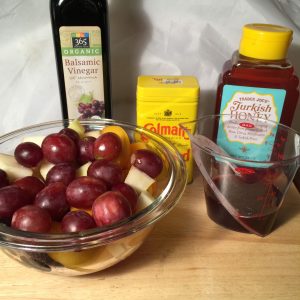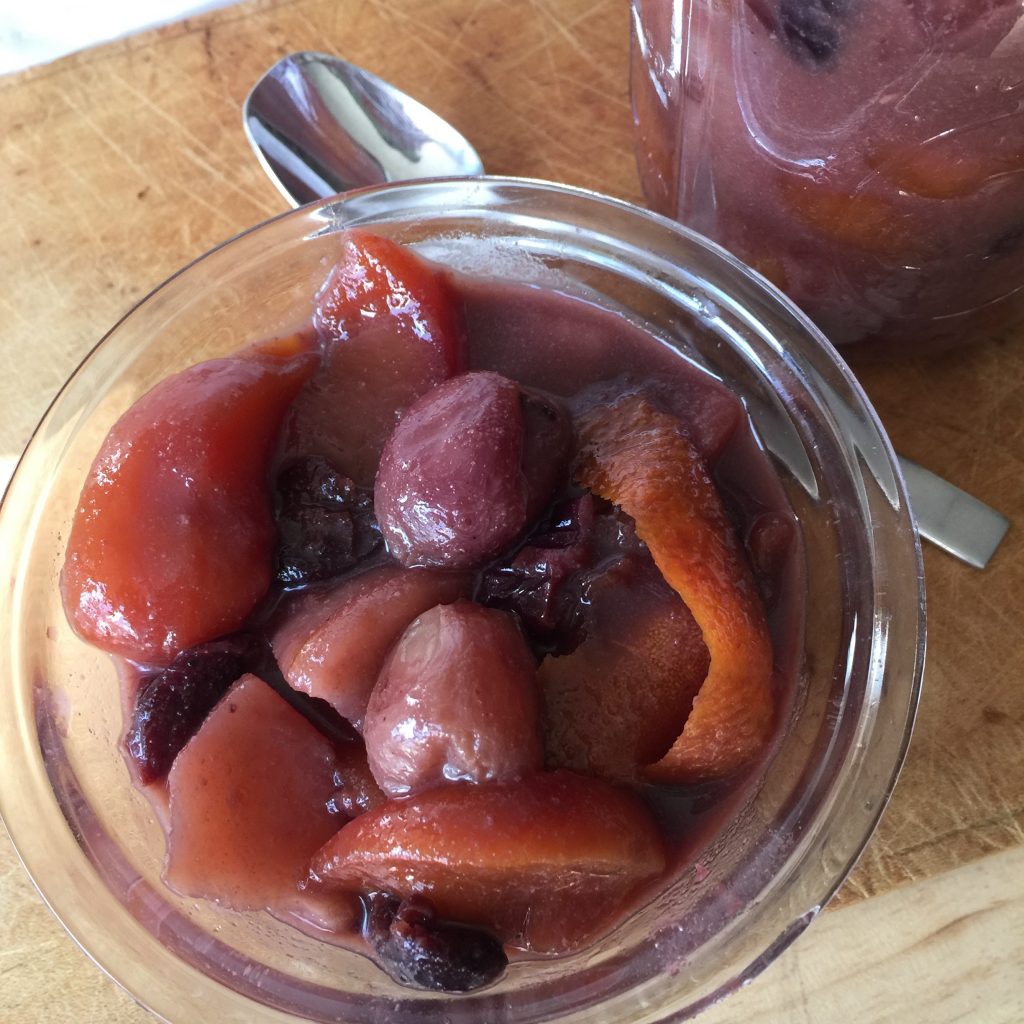I live to eat. But sometimes all I can put together is an efficient, balanced meal. One of my favorites is rotisserie chicken, a green salad, microwaved brown rice. A trip to the refrigerator makes it enjoyable.
You can travel the world through the condiments in my refrigerator. Some actually come from trips, others I make to recreate past pleasures. I have nutty Egyptian dukkah, chimichurri from Argentina, lemon-sharp Israeli tahini sauce, good old American cranberry relish, Indian tamarind chutney, Dijon mustard from Dijon, and more. A sprinkle, spoonful, or dollop of them works wonders with simple meals like this chicken dinner.
In winter, I include mostarda, a combination of fruits and mustard that I first had in
Bologna, Italy, where this sweet and sharp condiment is served with bollito misto, a feast of boiled meats that needs its kick as much as my understated dinner. An almost medieval combination of sugary candied fruits, wine, and horseradish-sharp mustard, mostarda stuck in my mind until I made my own, less sugary version.
For this, I drew on the many mostardas that I found when working my way across northern Italy. Some used fresh fruit, as I do. Going with wintery Bosc pears and large red grapes, I also added frozen cherries and peaches.
A combination of balsamic vinegar, pomegranate juice, honey, and orange zest gave spicy sweet flavor using only a bit of sugar and skipping the wine usually used. Mustard powder, which provides the heat, gives mostarda a murky look. (You avoid this if you can find mustard oil at an south Asian market – using only  a few potent drops, please.)
a few potent drops, please.)
Making mostarda is like cooking chutney. Use good quality frozen fruit; it is firmer so it stays chunky after cooking. Mustard powders—actually finely ground mustard seed—vary in taste from cleanly hot to unbearably bitter; Colman’s Mustard I find the most reliable. All mustard powder loses power in about 6 months. Adding it to deviled eggs, macaroni salad and cole slaw, or mixing it with oil to drizzle on steamed greens beans and carrots, are appealing ways to use it up.
Mostarda is best when eaten within three days. After that, the mustard fades and may get bitter. Happily, this condiment sets off sparks with all poultry, pork chops, and accompanying cheese and crackers, so it disappears quickly.
For Winter Fruit Mostarda recipe, click here.






